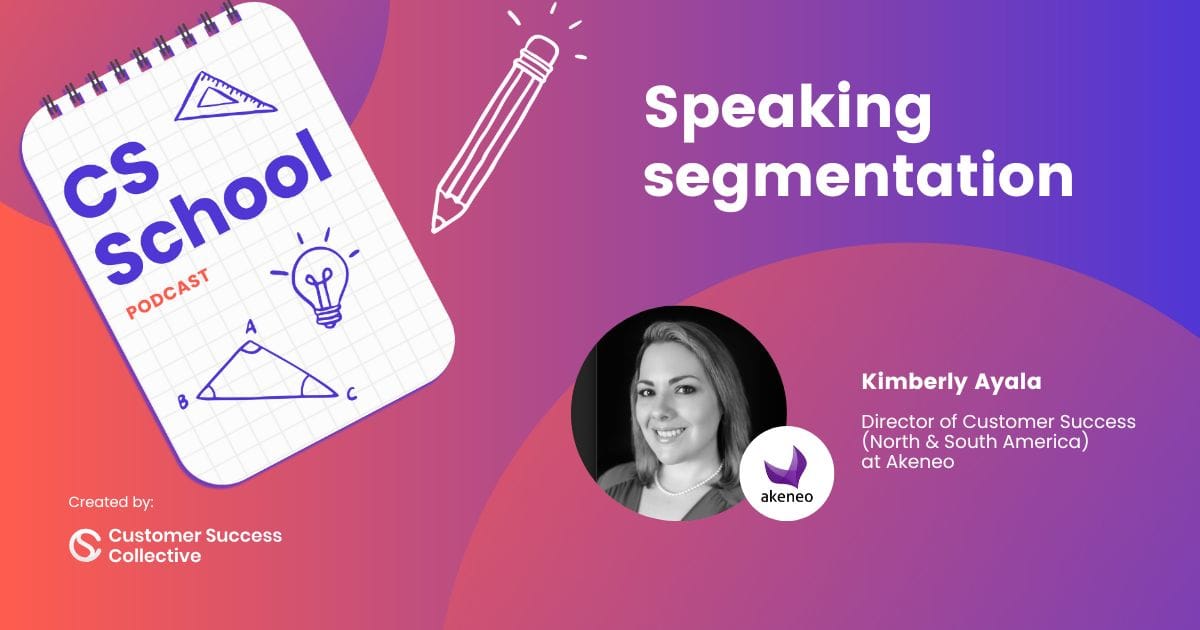Content plays a vital role in the customer success strategy. Not only does it answer key questions your users may have about your product, but it also helps you establish trust, build stronger relationships, boost engagement and retention rates, and nurture advocates for expansion and referrals.
Additionally, well-executed content plays a significant role in helping you solidify the credibility of your product, reinforce its value proposition, and maintain your reputation in an increasingly competitive market. This trio of factors combines to reduce customer churn and improve overall customer lifetime value.
Effective content presents itself in a range of forms, and in this article, we'll discuss:
- What good customer content looks like
- How to use content to engage your user personas
- How to create unique customer-centric content
- How to create appropriate content for your customer base
- Common mistakes when creating customer content
- The role of content in customer onboarding and expansion
- Why video content is important for customer success
What does good customer content look like?
When it comes to creating content for customers, the definition of "good" depends entirely on the goals and desired outcomes. For customer success teams, good content encompasses both practical product guidance and articulating the product's value in a way that resonates with users.
More than just listing features, good customer content tells a cohesive story that educates users on how to get the most out of the product to achieve their goals. It should be easy to consume, especially for those new to the product, and highlight key differentiation points compared to alternatives.
While the specific types of content may vary between assets like knowledge base articles or quarterly webinars, maintaining a consistent voice and messaging tailored to the customer journey stage connects the narrative. Ultimately, good customer content comes down to crafting compelling resources that provide continuous value, engage users at the right time, and drive product stickiness.

How to use content to engage user personas
While having one core product narrative is crucial, it should be adapted across content types to engage different user personas within your customer accounts.
As Customer Success Managers (CSM), you develop overarching messaging frameworks that guide content utilized throughout the entire customer lifecycle. This core content strategy remains largely the same, with adjustments to specific examples, use cases, and terminology to match the roles and needs of each persona, whether it's technical documentation for admins or best practice guides for end users.
The goal is to take that central product narrative and mold it to effectively reach diverse personas with relevance. It's less about changing the core messaging itself and more about optimizing the format and delivery to resonate with each unique audience segment, all while staying true to the product's value story.
With a strong narrative foundation, the message can flex into various content forms to engage users at scale.

How to create unique customer content
In any product category, competitors pose a constant threat, making differentiated customer content crucial for standing out.
Rather than simply rehashing general product information, focus on creating resources that highlight your brand's unique approach and the specific value customers receive. Understand the goals, challenges, and profiles of your user base to build content that speaks directly to their realities.
Leading with clear connections between your product's differentiators and the tangible outcomes it enables makes it rise above generic resources right from the start, solidifying loyalty. Back up that core value positioning with evidence through use cases, data points, and actionable guidance to make success a reality.
Building authentic connections through relevant stories told in a relatable voice helps customer content provide unmatched utility.
How to create appropriate customer content
To effectively engage your users, create content that aligns with their preferred channels and methods of consuming information. Conduct research and analyze usage patterns to determine what formats your customers gravitate towards and focus efforts there, whether it's visual step-by-step guides, video tutorials, community Q&A forums, or interactive product workshops. Meet them where their attention naturally lies.
Just as important is understanding your product's unique capabilities and your customers' needs to identify content gaps and opportunities. If existing materials don't adequately support certain users or goals, create targeted resources to empower them. Tailor tone, depth, and delivery based on those distinct audiences. Serving the right content through intuitive channels leads to greater product adoption and stickiness.

Common mistakes in customer content
One of the most common mistakes made when creating customer content is focusing too heavily on product capabilities rather than realized value.
This comes from a mindset of convincing customers of the product's supremacy. But users don't care about features nearly as much as clear guidance on applying the product to achieve their desired outcomes.
Start by highlighting the end benefits and use cases most relevant to your audience, then build educational content around the specific product tools and configurations that make those a reality.
Another misstep comes from choosing the wrong format or distribution method for your user base. You may invest in lengthy video assets when your customers strongly prefer written knowledge-based articles. Take the time to understand your audience's preferred learning channels and consumption patterns.
Creating content without this intimate understanding of your users won't drive the engagement and adoption needed to see success.

The role of content in onboarding and expansion
Content plays an integral role in every stage of the customer lifecycle, though it's often a reactive afterthought. To proactively drive successful onboarding and expansion motions, build content into the overall customer experience strategy and map out needs early.
When planning new product releases or go-to-market initiatives, also outline the specific user guidance and educational resources needed, from technical documentation to value realization content.
Develop core messaging and positioning early on to shape narratives around product capabilities and achieved results. Be sure to create role-specific internal resources for customer-facing teams to facilitate training, troubleshooting, and professional services engagements.
As well as training and support content, building out the external assets needed to drive awareness and adoption for the new offering or use case. Ensure content exists to guide users through setup, configurations, workflows, and measuring success.
Having a full content roadmap mapped to each customer journey stage allows you to execute a repeatable, scalable process for successful product launches, adoption pushes, and expansion campaigns. With content woven throughout the lifecycle, you equip customers for ongoing success.
%20(1)%20(1).jpg)
Why video guides are important for customer success
Video allows brands to connect with and engage users on a more personal, memorable level. In an increasingly crowded digital environment with fierce competition for attention, video's dynamic format stands out and drives higher engagement. Customer success teams should incorporate video throughout initiatives like user training, feature rollouts, and adoption programs.
There's a wide array of video types suited for different functions: Short tutorial videos integrated into relevant app pages grab attention to convey concepts visually. Interactive workshops or webinars via video build connections with users while teaching them about the product. Video content can be repurposed across channels like customer communities, messaging campaigns, and self-service portals, maximizing output.
While some users prefer reading text-based resources, many find videos more compelling and consumable. Incorporating diverse formats caters to different learning styles, allowing you to drive adoption with a broader segment of your user base. Leveraging video as a key component of customer education strategies enables scalable engagement.
Customer content best practices: Closing thoughts
Content remains one of the most powerful tools customer success teams have to drive product adoption, user satisfaction, retention, and revenue expansion. However, creating impactful assets requires a thoughtful, strategic approach. Here are some key takeaways:
Define your goals tied to customer success metrics, intimately understand your user personas, and optimize content delivery for their preferences. Craft compelling narratives that connect product capabilities to tangible value realized by customers.
Adapt content formats, examples, and distribution to engage different roles and persona segments. Focus on filling knowledge gaps rather than creating generic resources available elsewhere. Leverage diverse mediums like video to effectively reach and resonate with all your users.
Customer success teams that set clear objectives, have a comprehensive understanding of their customers, and are committed to differentiated value can develop content that captivates users and drives results. Your educational resources shape the customer experience; ensure they offer game-changing guidance and utility.



 Follow us on LinkedIn
Follow us on LinkedIn




